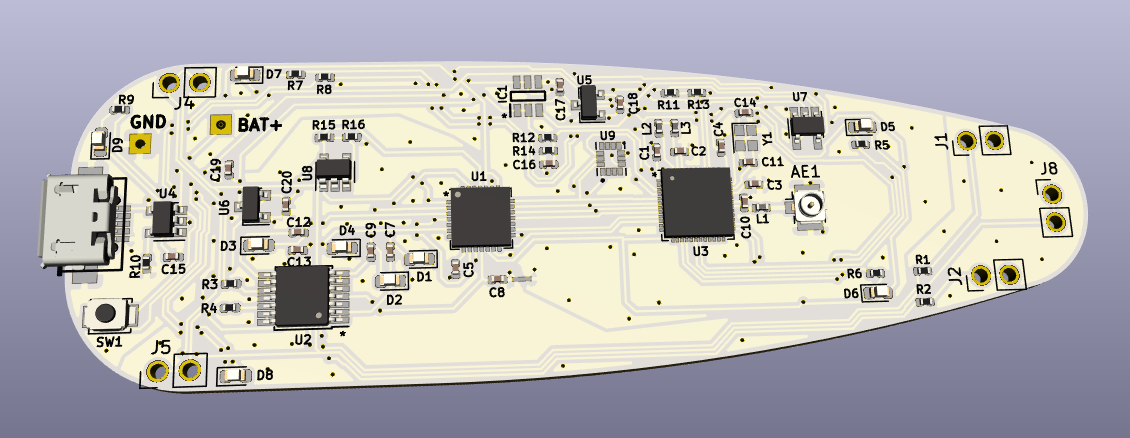-
uEMG is back!
01/15/2021 at 17:45 • 0 commentsFor a while we worked on this project in parallel with uECG - but more than a year ago shifted our focus and made very little progress since then.
Yet people asked about EMG and we decided to make at least something by using uECG as a sensor, by adding more processing - both on the device and on the PC. But also it became clear that we need a specialized device: wearing many different units wasn't convenient and data stream wasn't synced well enough.
Even though we had a (mostly) working PCB which produced good enough signal, it still was extremely inconvenient to wear - in a way, even worse than 4 separate uECGs - so it didn't really solve our problem, it only was a rough first prototype.
![]()
We started with a PCB design, considering various shapes - among our options there were ovoid, triangle, rhombus, trapezium, plus-sized oximeter, and some unspeakable curves of all kinds. Discussion took unreasonably long time and at some point Olha just created "bullet" variant that took into account all weak points of other designs, and here we are.
We introduced some changes into schematics as well, and took a new approach to PCB design - after (finally) learning about behavior of EMF propagating between traces and ground plane we minimized length of gaps there (by creating more, but shorter, gaps) - thus reducing inducted noises (hopefully).
The PCB is going to production next week, so there will be more updates relatively soon!
-
Some news about uEMG
12/25/2019 at 22:07 • 0 commentsAfter visiting Maker Faire Rome in October, things were, to put it mildly, not perfect. But today is a good day to tell the tiny amount of news we have.
Before going to Maker Faire, I wanted Dmitry to come up with a way to show how uEMG works. At the Maker Faire Prague this summer, I really liked the "singing bananas", so I suggested converting muscle activity into sound! It was so original that I was delighted with myself and my idea. Actually, I also wanted some kind of LED strip flashing in parallel! But Dmitry cooled my ardor. God be his judge.
So, we arrived in Rome, prepared our stand at the exhibition. And there Dmitry in the evenings, instead of walking around the city and looking at the Coliseum, wrote a code for the “voice acting” of uEMG. He even found the right music. But ... it seems uEMG was never destined to "sing". Instead of music, Dmitry suddenly decided to go visual! The truth is, sound was just too complicated to implement in a couple of days. So signal of each channel was processed with FFT and relevant part of the spectrum converted into activity level, which in turn was shown as size and color of corresponding box. You can see how it turned out on the video that we shot right at the exhibition.
So it goes. We are still very busy with our uECG project and have no time left for uEMG. But maybe on this day we can make a wish for the new year to bring us more time and energy for our new projects! Happy holiday to you!
uEMG - small 4-channel EMG wearable device
A 4-channel EMG wearable (with a bracelet!) to control stuff with it.
 Ultimate Robotics
Ultimate Robotics